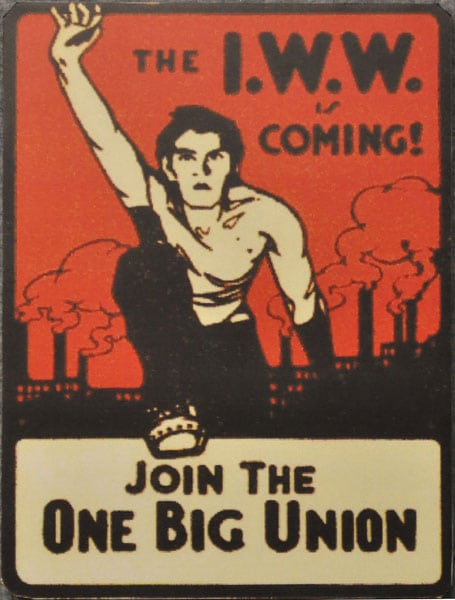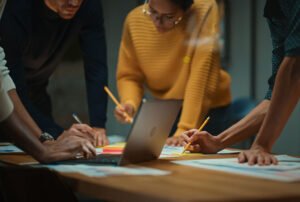
August 30, 2018; The Conversation
Lately, the news for unions has been getting worse. The number of workers belonging to a union has sunk to a low of 10.7 percent, according to the recent news release by the Bureau of Labor Statistics. That’s a number not seen since the passage of the Labor Relations Act in the 1930s. Just three months ago, as reported and commented on by NPQ, the Supreme Court of the United States made what many consider to be an absurd ruling against public sector unions. The ruling means that these unions are not allowed to charge fees to nonunion members for the costs associated with collective bargaining, even though those non-members will reap any benefits.
It is not coincidental that this case involved public sector unions. Ever since the 1950s, a movement called “Right to Work” has been using this argument against requiring workers to pay union dues or fees to hammer away at union membership in the private sector. However, the Bureau of Labor Statistics’ report shows public sector membership was much higher than the average at 34.4 percent. That is now likely to drop.
Or is it? According to a study conducted by researchers from the MIT Sloan School of Management, interest in joining a union is on the rise. Representing a 40-year high, 48 percent of non-union workers expressed interest in joining a union if they were given the opportunity. In 1977, that number was only at 38 percent. That number also means that 58 million Americans would have an interest in joining a union if they could, nearly quadruple the number of current union members (14.8 million in 2017).
More than 50 percent of the survey’s participants commented that their interest in a union comes from feeling they do not have the level of voice in their workplace they’d like to have. The most commonly cited issue was compensation, with 60 percent of respondents wanting more input on wages and benefits. This would seem to be a strong union argument, as according to the Bureau of Labor Statistics report, nonunion workers earned 20 percent less than union workers. Collective bargaining actually works!
Sign up for our free newsletters
Subscribe to NPQ's newsletters to have our top stories delivered directly to your inbox.
By signing up, you agree to our privacy policy and terms of use, and to receive messages from NPQ and our partners.
The writers of the article call this the “voice gap”: People want more say in the conditions of their workplace than they think they have right now. Other issues where respondents wanted more voice are in opportunities for promotion (55 percent), job security and respect for employees (53 percent), and harassment protection (51 percent).
Despite the argument that unions have had a positive impact on all of these issues in the past, the writers of the article do not believe that we will see a rise in union membership. Fewer than one percent are likely to see an organizing effort at their workplace, and of these only one in seven campaigns succeed; that percentage drops to one-in-ten in cases where the employer has been found by the National Labor Relations Board to have engaged in “unfair labor practices” (a fancy term for illegal union suppression).
Part of the reason for the huge gap between workers’ expressed desires and how union campaigns fare also has to do with the considerable pressure that employers can bring to bear, even absent engaging in illegal activity, to legally pressure their employees to vote “no.” For example, a 2009 study by Cornell professor Kate Bronfenbrenner for the Economic Policy Institute found, notes Jessica Harris in On Labor, “that employers held captive audience meetings in 89 percent of union election campaigns between 1999 and 2003. The average employer held 10.4 meetings during the course of an election campaign.” These meetings basically aim to persuade employees that their jobs may disappear if they have the temerity to vote for the union.
If workers are blocked from joining unions, however, there are other ways that voices are being raised and heard. Unions themselves are reaching out beyond their membership for the “Fight for 15” to raise the minimum wage to a reasonable level. On the website coworker.org, workers are encouraged to come together to raise awareness of issues. An example is that 42,345 Starbucks workers have joined the website. One petition wants Starbucks corporate to realize that morale at the stores is incredibly low due to labor cuts. To date, the petition has received more than 20,000 signatures! Although this does not have the same power and impact of collective bargaining, it is one way workers can make their voices heard.
In her article on the Supreme Court case, NPQ’s Carole Levine called for nonprofits to engage in this area. She argues that workers losing their rights and benefits will turn to our sector for assistance. Perhaps the nonprofit sector can take a cue from the results of the survey, as cited above, and do more than put a band-aid on things. Is there a better form of economic development than higher wages? Isn’t preventing harassment in the workplace part of a broader fight for social justice? Perhaps the sector can advocate for workers, coming together to use a strong, collective voice to promote real change.—Rob Meiksins













